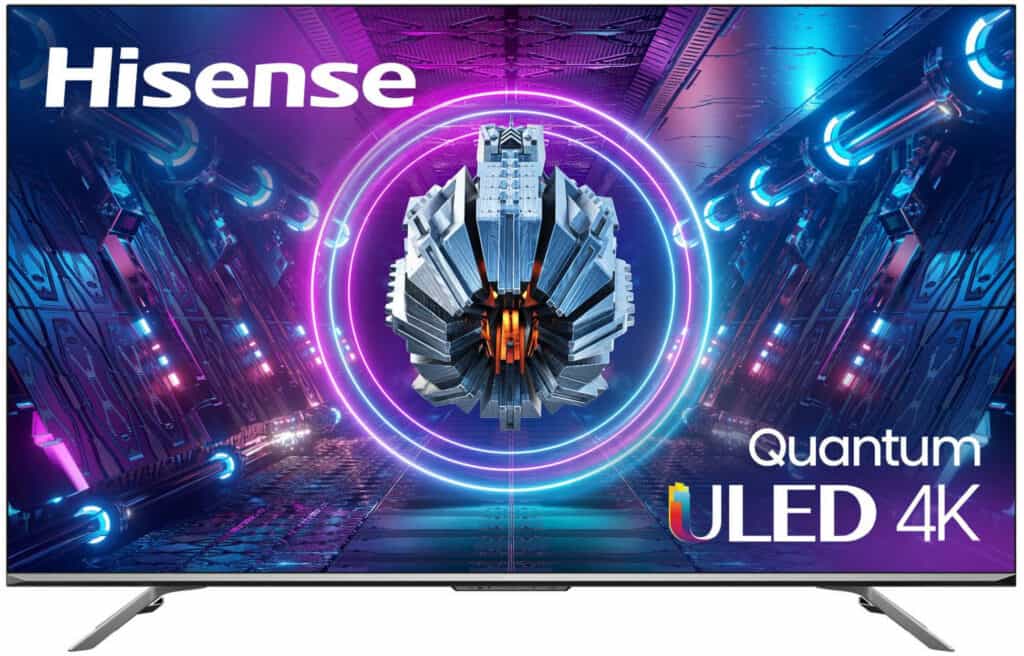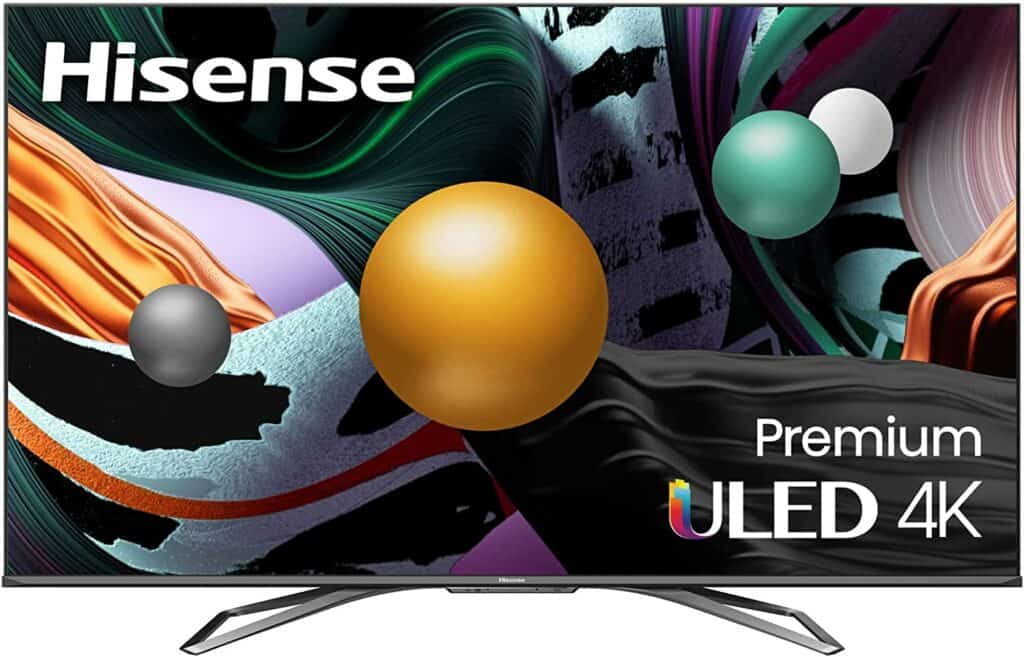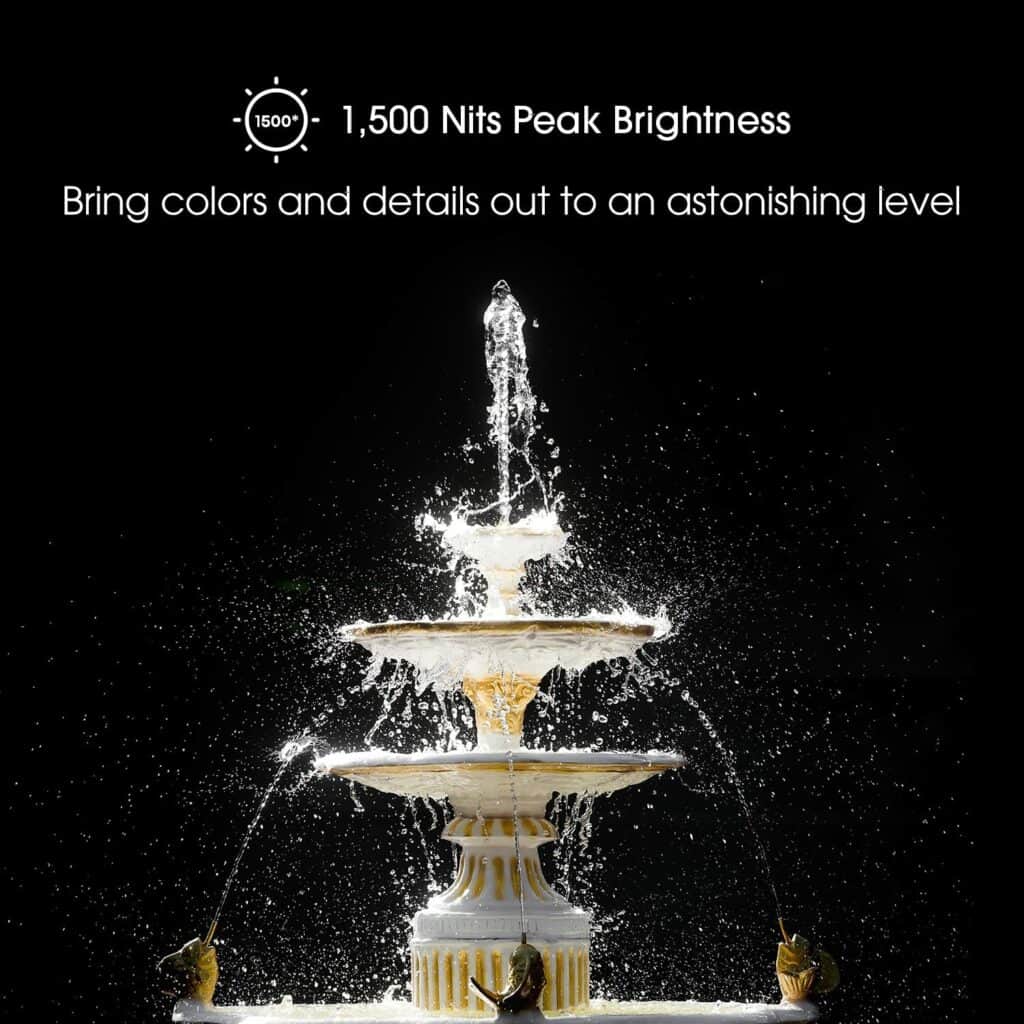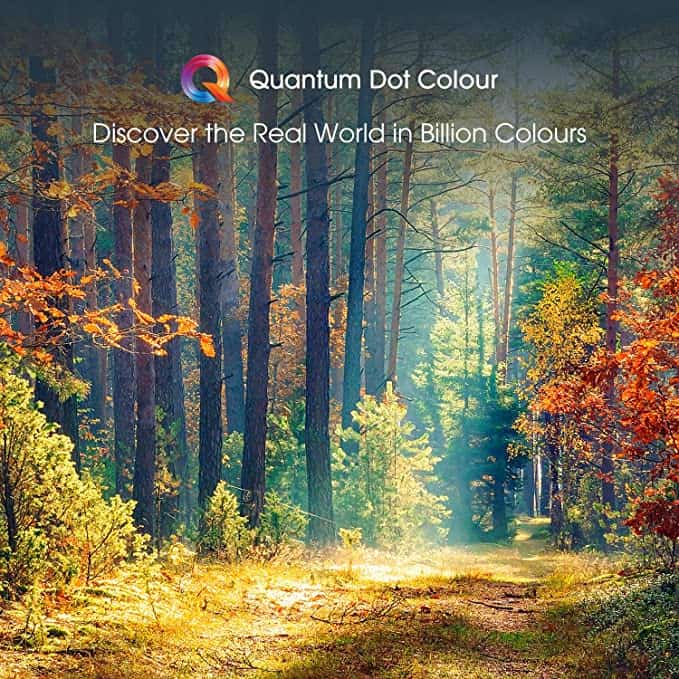In 2021 Hisense graced us with an amazing line of TVs, which includes the U6G, U7G, U8G, U8000GR and U9DG series. Each of these series brings something to the table, and in this article, we’ll compare 7G vs U8G, see how they are different and which one is better.
U7G vs U8G – Quick Overview
As we said in the intro, both U7G and U8G are part of the Hisense 2021 lineup, along with some other models.
Let’s take a quick look at them.
| Features | Hisense U7G | Hisense U8G |
|---|---|---|
| Screen Sizes (in inches) | 55, 65 and 75 | 55 and 65 |
| Screen Panel | QLED VA | QLED VA |
| Image Processor | Quad-core (ARM Cortex-A73) | Quad-core (2x ARM Cortex-A73, 2x ARM Cortex-A53) |
| Operating System | Android TV 10 | Android TV 10 |
| Refresh Rate | 120Hz | 120Hz |
| Variable Refresh Rate | Yes | Yes |
| Resolution | 4K | 4K |
| Contrast Ratio | 11,000: 1 | 54,000: 1 |
| HDMI Ports | 4 | 4 |
| USB Ports | 2 | 2 |
| WiFi and Bluetooth | Yes | Yes |
| Price | Check Price on Amazon | Check Price on Amazon |
Hisense U7G

Hisense positioned the U7G series as the “gamer’s TV” with HDMI 2.1 support, 4k@120Hz resolution, variable refresh rate (VRR), auto low-latency mode (ALLM) and FreeSync Premium VRR.
The TV is available in 55, 65 and 75-inch sizes.
Hisense U8G

If U7G is the “gamer’s choice TV.” The Hisense U8G is the perfect choice for someone who wants to watch their TV in a room with plenty of natural light thanks to the TV’s anti-reflection and anti-glare screen.
The U8G is available in two sizes — 55 and 65 inches.
Features Face to Face
So just from this short product intro, you can see that U7G and U8G have some noticeable differences, even though they come from the same lineup.
Now let’s take a look at the Hisense U7G vs U8G features face to face.
Panel Technology
Both TVs use QLED displays with VA panels. The quantum-dot LED display provides better contrast, brightness and color accuracy than its regular LED counterpart, which results in superior picture quality.
When it comes to the panels, the VA panels, while not having as good viewing angles as IPS ones, still make up for it with high-contrast visuals.
Winner: Draw
Image Processor
Both series use a quad-core processor, which is standard for Hisense. This allows its TVs to generally have excellent response times.
The Hisense U7G uses a MediaTek SoC (system-on-chip) with the 4-core ARM Cortex-A73 CPU, which has a 1400MHz frequency.
On the other hand, the U8G has the NovaTek SoC with four CPU cores (2x ARM Cortex-A73, 2X ARM Cortex-A52) under the hood.
Winner: Draw
Motion Technology
As for their response times, both TVs deserve good grades.
The U7G is a little slower at 13.5ms, compared to U8Gs impressive 9.5ms for a 100% response time (that’s how fast pixels fully change colors), but it’s still below the 14ms mark.
Both TVs also have a native refresh rate of 120Hz and include variable refresh rate (VRR), that is, they’re capable of varying the refresh rate in real-time.
Of course, both U7G and U8G have some minor issues, like slower response time in Game Mode for U7G on 4K@120Hz than on 60Hz or slower transition times in dark scenes for U8G, but overall, both TVs have very good motion technology.
Winner: U8G
Picture Quality
Contrast Ratio / Black Level
When it comes to contrast ratio, this is where U8G blows the U7G out of the water with a contrast ratio of 54,000: 1 vs 11,000: 1.
That said, both TVs offer a phenomenal contrast ratio and can deliver deep blacks with very little blooming.
Winner: U8G
Local Dimming
Both TVs feature local dimming, with full-array backlight. That said, the U8Gs local dimming is somewhat more effective than its cousin and has more dimming zones (this is the number of zones a TV can turn off to boost dark areas).
Winner: U8G
Peak Brightness

At 607 nits and 614 nits, respectively, both U7G and U8G offer really good peak brightness in SDR content and are bright enough so that glare won’t be a problem.
The U8G, however, takes the win here thanks to the better HDR peak brightness. Namely, while the U7G offers 700 nits in HDR, U8G goes up to an amazing 1,000 nits.
Winner: U8G
Color

The color gamut and color volume are impressive for both TVs here, and they both have a wide color gamut.
Still, with the DCI P3 xy coverage of 97.42% and DCI P3 uv of 97.12% on U8G versus U7G’s 92.03% and 94.97%, the U8G and 84.6% vs 74.6% 1,000 nits DCI P3 coverage, the Hisense U8G provides more accurate colors.
Winner: U8G
Viewing Angle
Unfortunately, U7G and U8G suffer from a familiar problem on all VA panels — poor viewing angles.
In particular, you’ll see color washout at around 25 degrees for both TVs, while color shift will start to occur at 25 degrees for U8G and 30 degrees for U7G — and both TVs will start to lose brightness at around 35 degrees.
Winner: U7G
Reflections / Anti-Glare
Back to some good news. As far as reflection and glare go, these two TVs handle that well, especially the U8G.
That’s not to say that U7G is shabby, as its semi-gloss screen finish can diffuse reflections nicely, but U8G has impressed us here with only 2.3% total reflections vs 5.2% on U7G.
Winner: U8G
Sound Quality
The sound quality on U7G and U8G is decent, but nothing that Hisense can toot its horn about too much, though it’s on par with Samsung (see our Hisense vs Samsung brand comparison review).
The bass is very low on both TV and while there is some distortion, it’s not terrible, but also not great.
That said, we do recommend checking out some soundbars and we have a few budget-friendly options.
Winner: Draw
Smart TV Platform (Operating System)
Hisense upgraded its 2021 lineup from Android 9.0 — which it used on the 2019 models — to Android 10, so both models here use this OS.
There’s not that much to say here other than that both TVs have a very good app selection and a smooth and user-friendly interface.
Winner: Draw
Connectivity
Inputs
Most Hisense smart TVs come with 4xHDMI and 2xUSB ports; this is the case for U7G and U8G. Vizio, for instance, has only one USB and up to four HDMI ports (see our Hisense vs Vizio TVs comparison).
Additionally, both also include a digital optical audio out, a 3.5mm analog audio jack and an Ethernet port.
Winner: Draw
Voice Assistant
Hisense TVs come with Google Assistant or Amazon Alexa voice assistants so voice navigation is easy enough for both models here.
Winner: Draw
Wireless Technologies
Both U7G and U8G support 2.4GHz and 5GHz WiFi as well as Bluetooth 5.0 wireless connections.
Winner: Draw
Conclusion
Although they were introduced in the same year, in this Hisense U7G vs U8G comparison, there could only be one winner and that’s the U8G. The U7G is a good TV model, no doubt, but the U8G has better color accuracy, better reflection handling and better peak brightness.
Related Read: Our Hisense H8G vs H9G comparison